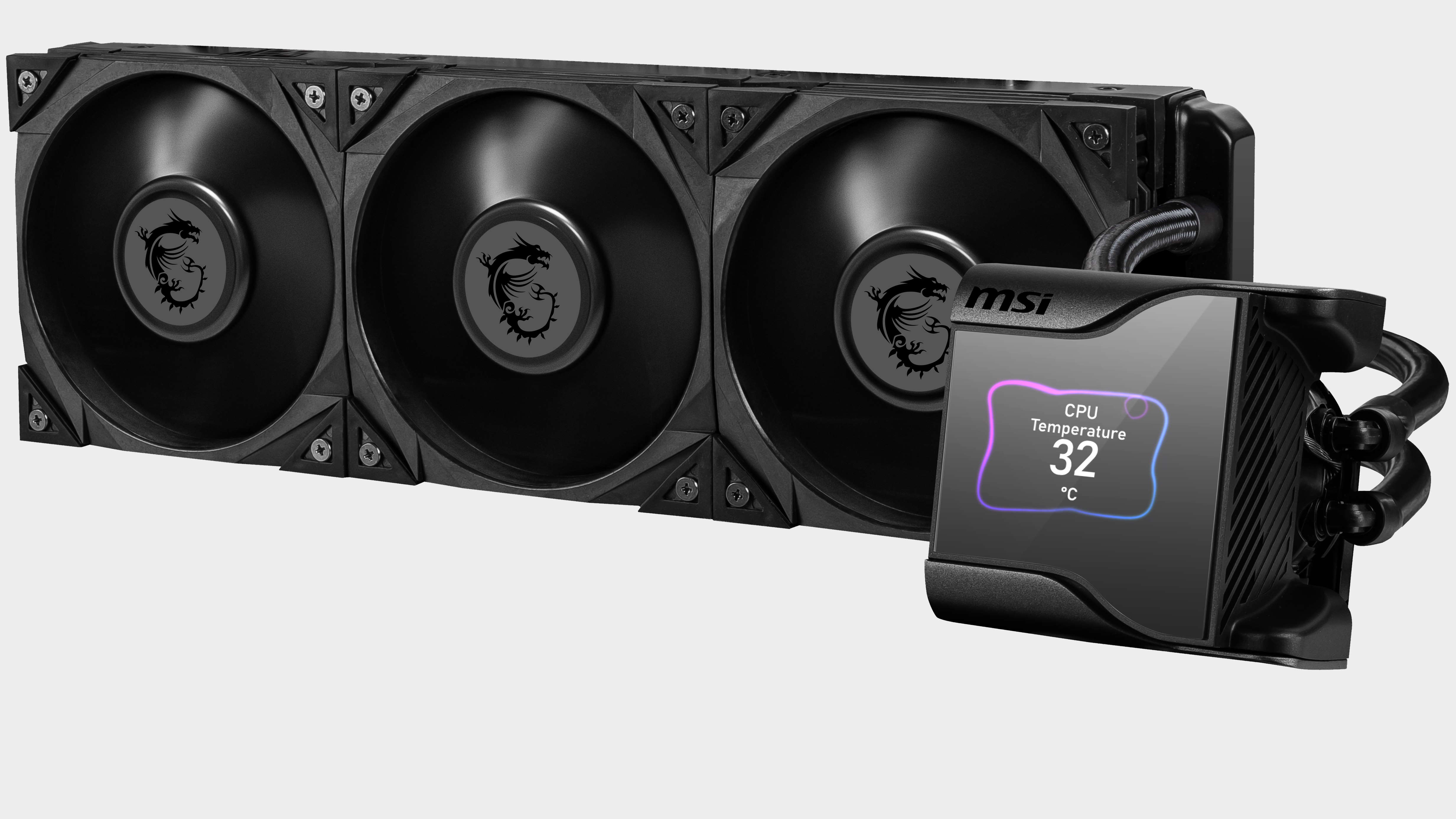Our Verdict
The MSI MEG Coreliquid S360 doesn't really have any negatives apart from its steep asking price. Something that does limit its relevance to high-end users only.
For
- Excellent IPS display
- Strong cooling performance
- Quality control software
Against
- It sure is pricey compared to other 360mm coolers
PC Gamer's got your back
Some gamers want a basic cooler they can install, out of sight and out of mind, safe in the knowledge that their PC is running well and simply doing its thing. At the other end of the spectrum are those users who take pride in their PCs, treating them as an art piece. It's this latter group the MSI is targeting with its MEG Coreliquid S360 all-in-one liquid cooler. Its gorgeous 2.4-inch IPS display demands to be shown off in all its glory. Though at $279, is it worth the price of admission?
MSI has been on a roll over the last few years, increasing its product range to include every item you need to build a complete PC, minus CPUs of course. The Coreliquid S360 isn't MSI's first AIO CPU cooler, but it surely makes a claim to being its best thanks to that lovely display, quality fans and—I can't believe I’m going to say this—a good quality software suite.
A key feature is the inclusion of LGA1700 compatibility for Intel's Alder Lake CPUs out of the box. This, along with both intel and AMD HEDT compatibility means the S360 is compatible with almost every socket over the last several years.
The Coreliquid S360 comes with three of MSI's Silent Gale P12 fans. They're optimised for high static pressure, which makes them ideal for use with radiators. They produce little noise, even under full load up to 2000 RPM. What noise they do produce is more like a hum than any kind of intrusive noise. Interestingly they lack any kind of RGB lighting. Has MSI reached 'peak RGB'? The Silent Gale P12 fans sell for around $30 each, so they alone add a lot of expense to the unit. The unit also supports a zero RPM mode for when your PC is idling.
AIO coolers with displays atop the block are not new. There's the Asus ROG Ryujin II, NZXT Kraken Z73 and Thermaltake Toughliquid Ultra among others. Still, the MSI S360’s 2.4-inch display is the obvious highlight of the unit. It can be rotated 90 degrees four ways so you’ll always have the correct orientation showing. The 320x240 2.4in display is crisp and colourful. It can even show .mp4 video, which is something not all AIOs with screens can do. It can display monitoring information, GIFs and images, or things like the system clock and weather.
Intel CPU compatibility: LGA 1150/1151/1155/1156/1200/1700/LGA 2011/2011-3/2066
AMD CPU compatibility: AM4/FM2+/FM2/FM1/AM3+/AM3/AM2+/AM2/SocketTR4/sTRX4/SP3
Fans: Silent Gale P12 fans x 3
Fan speed: 0-2000 RPM
Noise level: 22.7 dB(A)
Radiator dimensions: 394 x 120 x 27mm / 15.5 x 4.7 x 1.06 inches
Block Dimensions: 95 x 95 x 54 mm
Tube Length: 400mm
The S360's screen, fan and pump functions are all controlled via the MSI Center software. The fan and pump controls in particular deserve praise. The design is simple and intuitive. It's like MSI consciously decided to go with a 'creator' theme rather than choose its gamer-oriented dragon branding. It's one of the better system control apps around and a refreshing step backwards from sometimes overly garish UIs.
AIO coolers cool a CPU very well, but when compared to traditional air coolers and their adjacent fan positioning, the use of AIOs can lead to a lack of airflow around the socket area possibly leading to overheating issues with the VRM, memory or M.2 drives. This is something we discovered in our recent cooling deep dives. The Coreliquid S360 helps to negate this thanks to the inclusion of a 60mm fan embedded within the pump block too.

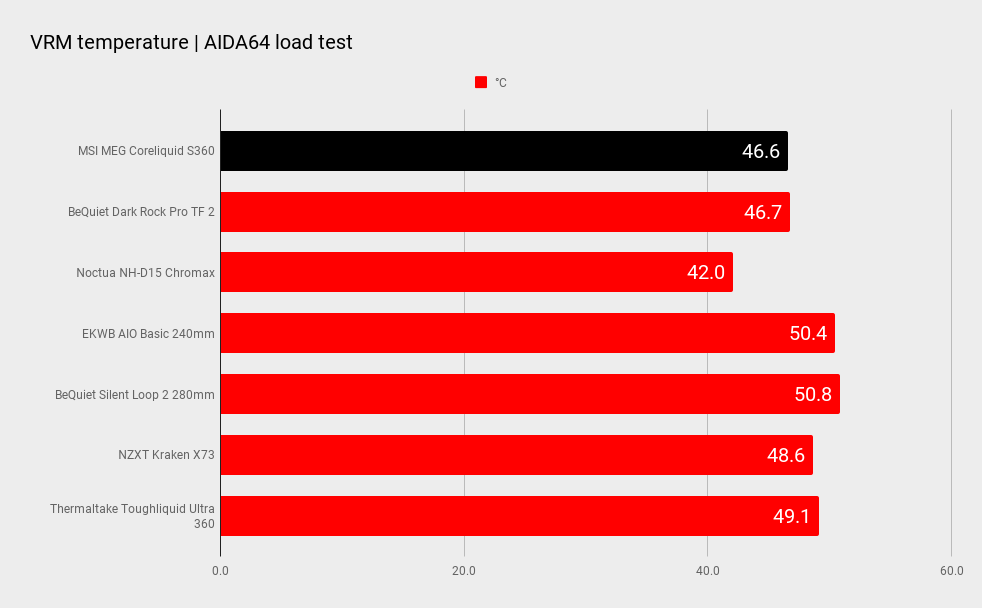
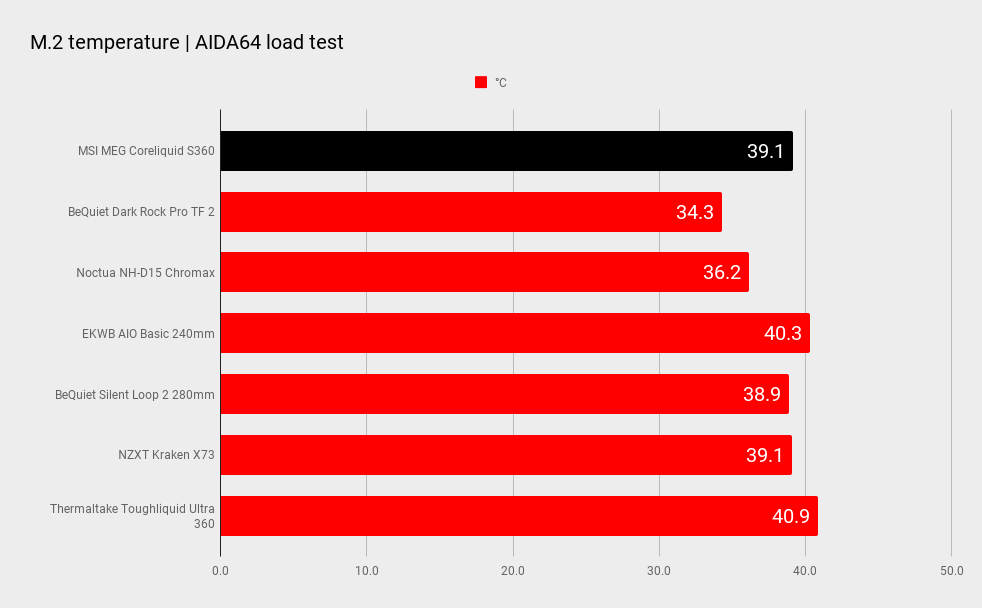
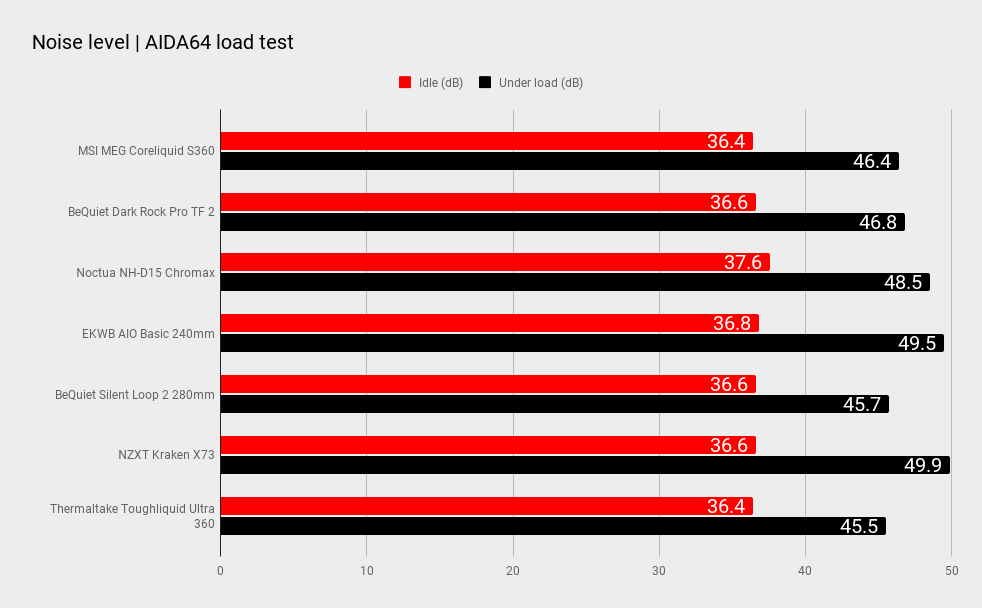
First and foremost, an expensive cooler must perform, so how does it do? Given its low noise characteristics, surprisingly well. We tested it with an AMD Ryzen 7 5800X inside a Razer Tomahawk ATX case. This case is a little restrictive compared to more open fascia design cases, or an open bench, but it's good for real world testing. After 30 minutes of AIDA64 stress testing at 19°C ambient, the Coreliquid S360 almost matches the NZXT Kraken Z73 360mm in terms of cooling, doing so with a lower noise level.
The TT Toughair Ultra 360 is just a degree warmer, but comes in even quieter. Overall we feel that MSI has designed the cooler to sit in a nice sweet spot, delivering low load noise levels while giving away only a mere 2 or 3 degrees to higher fan speed units.
Most competing AIOs tend to be quite similar, especially Asetek based units like the S360. Features such as the display and fans are the major points of differentiation. Of the three recent high end AIO coolers I have personally tested: the MSI, the Thermaltake Ultra 360 and the NZXT Kraken Z73, the MSI can be considered a strong competitor. It's easily got the best display, it's almost as quiet as the TT and cools almost as well as the NZXT, though at a lower noise level.
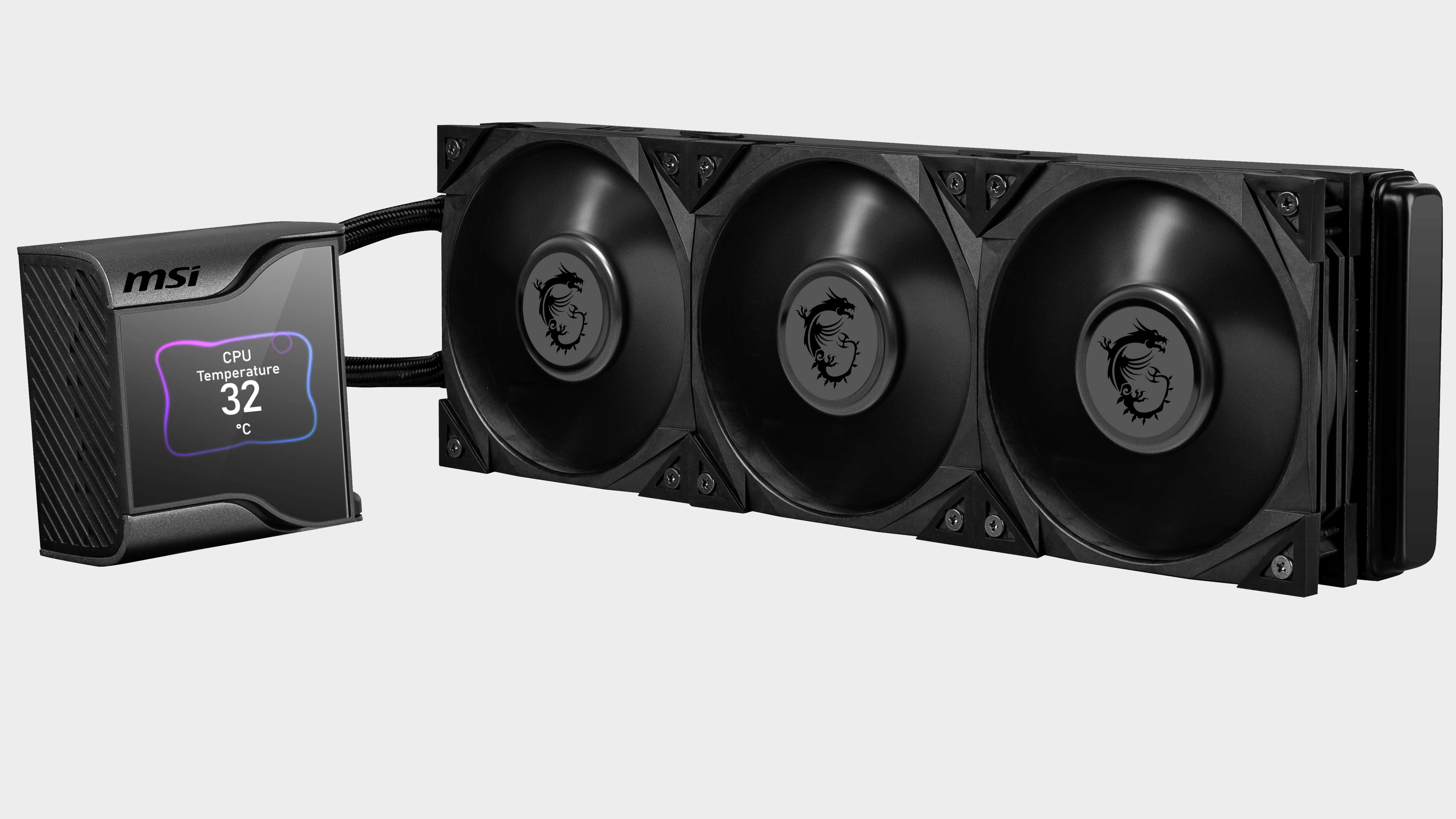
Which one you go for may even come down to how it matches the other products in your system. If you've got other MSI products, you'll be happy that you won't have to install too many other control apps.
Back to the MSI Coreliquid S360, and we're pleased to say that it's one of the best AIOs on the market but only for users who love to show off their PC. And only for those with suitably high-end systems to match it with. \
Honestly, it's overkill and too expensive to truly recommend for all PC gamers, but if you're after an attention-grabbing look for your high end rig, you should give the MSI MEG Coreliquid S360 a good look. It can keep a high core count CPU cool without compromising on noise levels. With Alder Lake support out of the box it's got some good years of compatibility ahead of it, too.
The MSI MEG Coreliquid S360 doesn't really have any negatives apart from its steep asking price. Something that does limit its relevance to high-end users only.

Chris' gaming experiences go back to the mid-nineties when he conned his parents into buying an 'educational PC' that was conveniently overpowered to play Doom and Tie Fighter. He developed a love of extreme overclocking that destroyed his savings despite the cheaper hardware on offer via his job at a PC store. To afford more LN2 he began moonlighting as a reviewer for VR-Zone before jumping the fence to work for MSI Australia. Since then, he's gone back to journalism, enthusiastically reviewing the latest and greatest components for PC & Tech Authority, PC Powerplay and currently Australian Personal Computer magazine and PC Gamer. Chris still puts far too many hours into Borderlands 3, always striving to become a more efficient killer.
